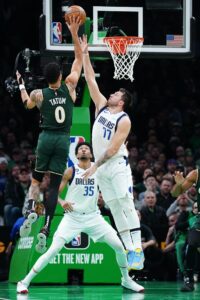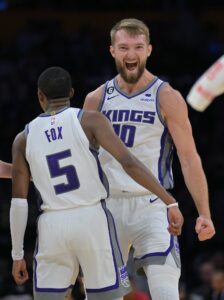The Phoenix Suns appear to be in a tricky spot two months into the season.
On the surface, the Suns still rank as one of the league’s top teams. They were two victories from capturing the NBA championship two seasons ago. They proved that was no fluke last season by piling up 64 regular-season victories and entering the postseason as the No. 1 overall seed.
They couldn’t sustain that dominance in the playoffs, as they required six games to knock out the upstart Pelicans, then saw their season end unceremoniously with a Game 7 collapse against the Mavericks in the Western Conference semifinals.
Despite the distraction of owner Robert Sarver’s suspension and injuries to starters Chris Paul and Cameron Johnson, the Suns got off to a strong start this season. They were 16-7 but have since lost four straight.
They were blown out by the Mavs and Celtics before back-to-back losses to New Orleans, which has the look of a serious contender with the return of Zion Williamson.
The Suns should still finish in the top six in the Western Conference. They have one of the league’s premier players in Devin Booker, who is averaging a career-best 27.4 points per game.
After allowing Deandre Ayton to enter restricted free agency over the summer, the Suns chose to match the Pacers’ giant offer sheet. Ayton has remained productive, posting numbers in line with his previous seasons.
Paul has finally returned from his nagging heel ailment. Johnson should return sometime next month from his knee injury.
The Jae Crowder situation still looms over the front office. It’s not a question of if, but rather when, Crowder will be dealt. GM James Jones has patiently waited for an offer that will presumably include a rotation player to help the team this season.
Will that be enough for the Suns to make a deep playoff run? Gerald Bourguet of GoPhnx.com doesn’t think so. He points out the team doesn’t get to the free throw line often enough and lacks the mental toughness of past teams.
Moreover, he sees the roster as being fundamentally flawed, lacking in ball-handling, offensive creation, playmaking and size at power forward.
The Suns have other assets besides Crowder to deal, most notably the expiring contracts of Dario Saric and Torrey Craig. They also own all of their future draft picks.
That brings us to today’s question: What should the Suns do to maintain their status as one of the Western Conference’s top teams? Will roster tweaks be enough or do they have to do something drastic to keep up with the other contenders?
Please take to the comments section to weigh in on this topic. We look forward to your input.
 Still, Jokic ranks behind two players that remain atop Wright’s list for a second consecutive week. At No. 1, it’s Mavericks guard
Still, Jokic ranks behind two players that remain atop Wright’s list for a second consecutive week. At No. 1, it’s Mavericks guard  The Kings addressed their outside shooting in all sorts of different ways, drafting
The Kings addressed their outside shooting in all sorts of different ways, drafting